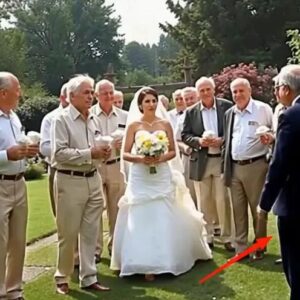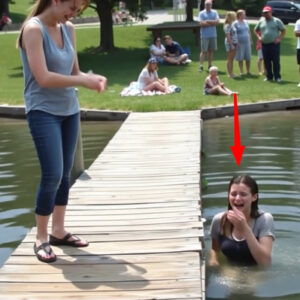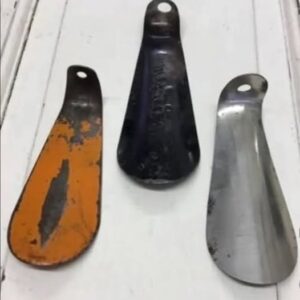The morning sky was heavy with gray clouds, casting an ominous shadow over Greenwood Cemetery as family and friends gathered for what should have been a final farewell. Margaret Chen stood at the edge of the crowd, her weathered hands clutching a mysterious black bag, her refusal to wear traditional mourning attire drawing concerned glances from other attendees.
“I’m not attending this charade,” she had declared just hours earlier, her voice carrying a conviction that surprised even herself. “That coffin doesn’t contain my son.”
Her daughter-in-law, Sarah, had pleaded with her, desperation evident in her tear-stained eyes. “Mom, please reconsider. This is David’s funeral—your son’s final ceremony. How can you possibly refuse to attend?”
Margaret’s response had been unwavering, her maternal instincts screaming against the official narrative. “You simply don’t comprehend the situation. My beloved son isn’t resting in that coffin. Someone is deliberately concealing the truth from us.”
The Official Story Versus a Mother’s Heart
The authorities had presented what seemed like irrefutable evidence. The devastating automobile accident had been so severe that facial recognition became impossible. The vehicle had burst into flames upon impact, they explained, leaving behind charred remains that required extensive forensic analysis. DNA testing had supposedly confirmed the victim’s identity, yet something deep within Margaret’s soul refused to accept these clinical explanations.
“The documentation appears legitimate,” Sarah had insisted, spreading the official papers across the kitchen table. “The medical examiner’s report, the police investigation findings, even the insurance company has processed the claim. The DNA results definitively prove it was David.”
Margaret had studied each document with meticulous attention, searching for inconsistencies. “These papers mean nothing to me,” she had whispered, her voice trembling with emotion. “A mother knows her child’s presence, even in death. This feeling in my heart—it’s telling me my son remains among the living.”
Sarah had attempted to console her mother-in-law with gentle understanding. “Grief affects people differently. Sometimes our minds create protective mechanisms when reality becomes too painful to bear. You’re experiencing denial because accepting his loss feels impossible.”
“Stop referring to my son in past tense,” Margaret had snapped, her eyes flashing with determination. “David is alive somewhere, and I intend to prove it.”
The Reluctant Compromise
After hours of emotional discussion, Margaret had finally agreed to attend the ceremony, though her conditions raised eyebrows throughout the family. She refused the traditional black mourning attire, instead selecting a vibrant blue coat that seemed almost defiant against the somber occasion. More concerning was her insistence on bringing a heavy black bag, which she guarded with fierce protectiveness.
“At least she’s coming,” Sarah had murmured to her sister-in-law, Lisa. “That’s what matters most right now.”
The extended family had gathered from across the country, all sharing memories and offering condolences. David’s colleagues from his successful marketing firm attended in impressive numbers, testament to his popularity and professional achievements. His childhood friends shared stories of adventures and mischief, painting a picture of a life lived fully despite its apparent premature ending.
Yet throughout these touching tributes, Margaret remained silent, her attention focused elsewhere, as if listening for something others couldn’t hear.
An Atmosphere of Foreboding
The weather seemed to mirror the family’s emotional state as the funeral procession made its way through the cemetery’s winding paths. Dark clouds gathered overhead, threatening rain, while a cold wind rustled through the ancient oak trees that stood sentinel over countless graves.
Greenwood Cemetery had served the community for over a century, its well-maintained grounds providing final resting places for generations of local families. The Chen family plot, purchased years earlier during more optimistic times, sat beneath a majestic maple tree whose branches would provide shade and beauty through changing seasons.
Father Rodriguez, the family’s longtime spiritual advisor, conducted the ceremony with practiced compassion. His words offered comfort to the grieving, speaking of eternal peace and divine mercy. The assembled mourners found solace in familiar prayers and readings, drawing strength from shared faith during this difficult transition.
However, Margaret appeared disconnected from the religious proceedings, her gaze fixed intently on the polished oak coffin that supposedly contained her son’s remains. Something about its appearance troubled her—perhaps the weight seemed insufficient, or the positioning appeared somehow wrong. Her experienced mother’s eye, honed by decades of caring for David through illness and injury, detected subtle inconsistencies that others missed.
The Moment of Truth Arrives
As the ceremony progressed toward its conclusion, the funeral director signaled for the final sealing of the coffin. Two workers approached with tools and nails, preparing to secure the lid permanently before lowering the casket into the prepared grave. This traditional practice provided symbolic closure, representing the definitive separation between the living and the deceased.
The sound of hammering began, each strike echoing across the cemetery grounds with metallic finality. Family members dabbed at tears, embracing each other for support as reality settled upon them. Children fidgeted uncomfortably, not fully understanding the gravity of adult grief but sensing the overwhelming sadness surrounding them.
Margaret listened to each hammer blow with growing agitation. Every strike felt like a betrayal, a participation in what she believed was an elaborate deception. Her fingers tightened around the handles of her mysterious black bag as an internal battle raged between social expectations and maternal certainty.
Suddenly, without warning or explanation, Margaret stepped forward with determined purpose. Her face had drained of color, becoming almost ghostly pale, but her movements carried unwavering conviction. The assembled mourners watched in stunned confusion as she placed her bag carefully on the ground and reached inside.
The Axe Falls
What happened next would be discussed and debated for years throughout the community. Margaret withdrew a heavy carpenter’s axe from her bag, its steel blade gleaming despite the overcast sky. Before anyone could comprehend her intentions or react to prevent her actions, she raised the tool high above her head.
The first blow landed with tremendous force against the coffin lid, producing a sharp crack that echoed like thunder across the silent cemetery. Splinters of expensive oak flew in multiple directions as the impact created a visible fracture in the polished wood.
“Stop her!” someone screamed from the crowd, but Margaret was already preparing her second strike.
The axe fell again with equal intensity, widening the initial crack and causing sections of the lid to separate completely. The sound was devastating—not just the physical destruction of wood and metal, but the audible shattering of social conventions and funeral propriety.
A third blow split the coffin nearly in half, revealing its interior to the horrified assembly.
The Horrifying Discovery
Complete silence enveloped the cemetery as the reality of what lay before them became undeniable. Several attendees instinctively covered their mouths in shock, while others stepped backward as if trying to escape the implications of what they witnessed.
Father Rodriguez lowered his eyes, perhaps in prayer or perhaps in hope that closing them might somehow change the scene. The funeral director stood frozen, his professional composure completely shattered by this unprecedented situation.
Then, cutting through the stunned quiet, Sarah’s voice rose in a scream that seemed to pierce the very heavens:
“It’s empty! The coffin is completely empty!”
The interior of the supposedly occupied coffin revealed nothing but pristine white satin lining and a small pillow where a head should have rested. No body, no remains, no evidence that anyone had ever occupied this expensive final resting place. The elaborate casket, which had cost thousands of dollars and been selected with careful consideration for David’s final journey, contained nothing but empty space and broken promises.
Chaos and Confusion Erupts
Panic spread through the assembled mourners like wildfire. Family members began shouting questions while friends exchanged bewildered glances. Several men rushed toward the cemetery workers, demanding immediate explanations for this impossible situation.
“Where is the body?” David’s uncle demanded, grabbing the nearest groundskeeper by his uniform shirt. “What happened to our nephew?”
Someone with presence of mind called emergency services, while others began photographing the scene with their smartphones, creating digital evidence of this extraordinary discovery. The carefully orchestrated solemnity of the funeral had transformed into chaotic confusion and growing fear.
Sarah stood motionless, her designer black dress fluttering in the increasing wind, her expensive purse forgotten on the ground where it had fallen from nerveless fingers. Her world had shifted fundamentally in the space of a few axe blows, leaving her questioning everything she thought she knew about her husband’s death.
Margaret remained standing over the destroyed coffin, the axe still gripped tightly in her weathered hands, knuckles white with tension. Her breathing was labored, but her expression showed no regret—only vindication mixed with growing concern about what this discovery truly meant.
“I told you all,” she said quietly, her voice somehow carrying clearly despite the surrounding chaos. “I told you my son wasn’t here. A mother knows.”
Unexpected Testimony Emerges
As the initial shock began to subside, a thin man in a cemetery maintenance uniform pushed hesitantly through the agitated crowd. His face showed obvious reluctance to speak, but conscience appeared to overcome his natural desire to remain invisible.
“The body…” he began, then stopped, swallowing nervously before finding his courage. “The remains were removed. It happened during the night shift, just two days ago. Two individuals arrived with what appeared to be official documentation, claiming they needed to transport the deceased to another city’s morgue for additional forensic examination.”
His words fell like ice water over the assembled group, creating a new level of horrified understanding. This wasn’t simply an administrative error or misunderstanding—someone had deliberately removed David’s body under cover of darkness.
“I thought it was routine,” the worker continued, his voice growing stronger with each word. “They had badges, official paperwork, even a specialized transport vehicle. I helped them load the coffin into their van. They said the family had requested the additional testing to ensure proper identification.”
Margaret’s grip on the axe tightened further as the implications became clear. “Who were these people? What did they look like? Did you get license plate numbers or company names?”
The maintenance worker shook his head regretfully. “It was dark, and I was focused on following their instructions. They seemed legitimate—professional uniforms, proper equipment, all the right documentation. I never questioned their authority.”
Official Investigation Begins
The police arrived with impressive speed, their squad cars creating a barrier around the crime scene while officers began organizing witness interviews. Detective Maria Santos, a twenty-year veteran with experience in complex cases, took charge of the investigation with professional efficiency.
“I need everyone to remain calm and provide accurate statements,” Detective Santos announced, her authoritative voice cutting through the lingering chaos. “This is now an official investigation, and we’ll need detailed information from everyone present.”
The initial police response revealed the complexity of the situation. The funeral home director was contacted immediately, his shocked response confirming that he had delivered the sealed coffin to the cemetery according to standard procedures. The morgue logs were requested, transportation records examined, and security footage from various locations began to be collected.
However, the most disturbing discovery came when officials contacted the city morgue directly. According to their carefully maintained records, no authorization had been issued for any body removal or transport. Furthermore, the entry corresponding to David’s case number contained a cryptic notation that chilled everyone involved.
Instead of David’s full name and case details, the log simply read: “Disposal—error in documentation.”
The Cover-Up Unravels
This revelation transformed what might have been explained as a bureaucratic mix-up into clear evidence of deliberate deception. Someone had systematically erased all official traces of David’s existence after his supposed death, suggesting either an elaborate cover-up of a crime or the staging of his death entirely.
Detective Santos coordinated with multiple agencies as the investigation expanded rapidly. The Department of Motor Vehicles was contacted to verify accident records, insurance companies were questioned about claim processing, and even the hospital where David had allegedly been pronounced dead was asked to produce their emergency room records.
Each inquiry revealed new inconsistencies. The accident report contained discrepancies in timing and location details. Insurance claims had been processed with unusual speed, bypassing typical investigation protocols. Hospital records showed gaps in documentation during the critical hours when David should have been brought in.
“This appears to be a coordinated effort,” Detective Santos confided to her partner, Officer James Mitchell. “Someone with access to multiple systems has been manipulating records, creating a false narrative of death while the actual person remains unaccounted for.”
Margaret’s Determined Quest
While official investigations proceeded through proper channels, Margaret began her own relentless search for answers. She had been vindicated in her refusal to accept the official story, but this validation brought little comfort when her son’s actual fate remained unknown.
She sat on a weathered cemetery bench, still holding fragments of the destroyed coffin lid, her blue coat a stark contrast to the gray surroundings. In her eyes burned not the despair of bereavement, but the fierce determination of a mother who would not rest until truth was revealed.
“If David is alive somewhere,” she whispered to herself, making a solemn vow, “I will find him. If someone has harmed him, I will find them. If he has truly died, I will ensure he receives the peaceful rest he deserves.”
The investigation would continue for weeks, involving federal agencies as evidence pointed toward identity theft, insurance fraud, and possibly human trafficking. Margaret’s maternal instinct and desperate axe blows had uncovered a conspiracy that reached far beyond a simple funeral fraud.
The Broader Implications
As news of the empty coffin discovery spread throughout the community, other families began questioning similar circumstances in their own experiences. The police department received dozens of calls from people whose relatives had died under questionable circumstances, whose funerals had seemed somehow incomplete or suspicious.
A pattern began emerging of targeted individuals—people with valuable insurance policies, minimal family connections, or specialized skills that might make them valuable to criminal organizations. David fit this profile perfectly: a successful marketing professional with substantial life insurance, limited family ties, and expertise in digital communications.
The local news media picked up the story, broadcasting Margaret’s courageous stand against official deception to audiences across the region. Her refusal to accept authoritative explanations when they contradicted her maternal intuition resonated with parents everywhere, inspiring others to question circumstances they had previously accepted without challenge.
Conclusion: A Mother’s Love Triumphs
Margaret Chen’s dramatic revelation at her son’s funeral exposed more than just an empty coffin—it uncovered a network of deception that had been operating undetected for years. Her willingness to risk social embarrassment and legal consequences in defense of her maternal convictions ultimately saved not only her son but potentially dozens of other victims.
The investigation continues, with David’s actual fate still unknown but hope remaining that answers will eventually emerge. Margaret’s story serves as a powerful reminder that sometimes the most important truths can only be discovered by those brave enough to challenge official narratives when their hearts tell them something is fundamentally wrong.
In a world where authority and documentation often override personal intuition, Margaret Chen proved that a mother’s love remains one of the most reliable detectors of truth—even when that truth lies hidden beneath layers of deliberate deception.
Her blue coat and her axe became symbols of resistance against those who would exploit grief for their own purposes, and her determination continues to inspire others facing similar circumstances. The empty coffin at Greenwood Cemetery stands as testament to the power of unwavering maternal instinct and the courage required to act upon it, regardless of social expectations or potential consequences.
The search for David Chen continues, but his mother’s discovery has already ensured that no other family will face the same deception. Sometimes the greatest victories come not from accepting what we’re told, but from having the courage to break open the lies that conceal the truth.





